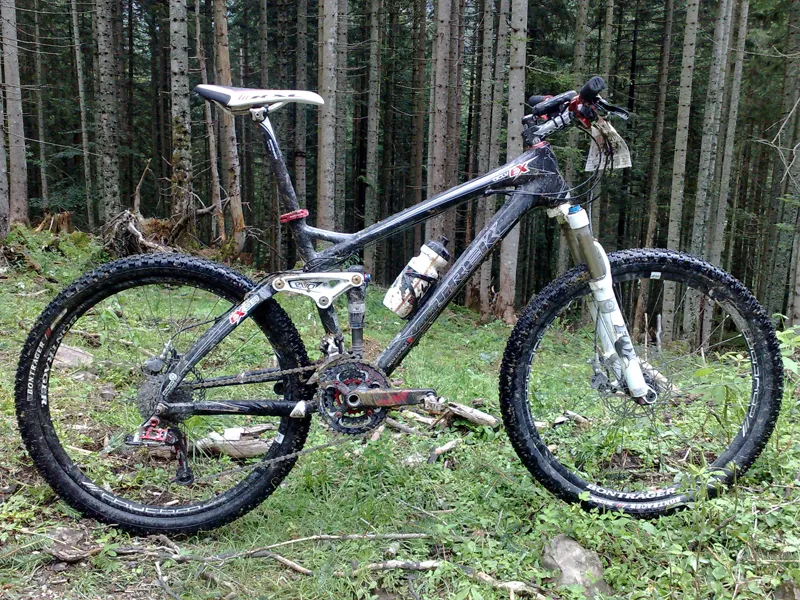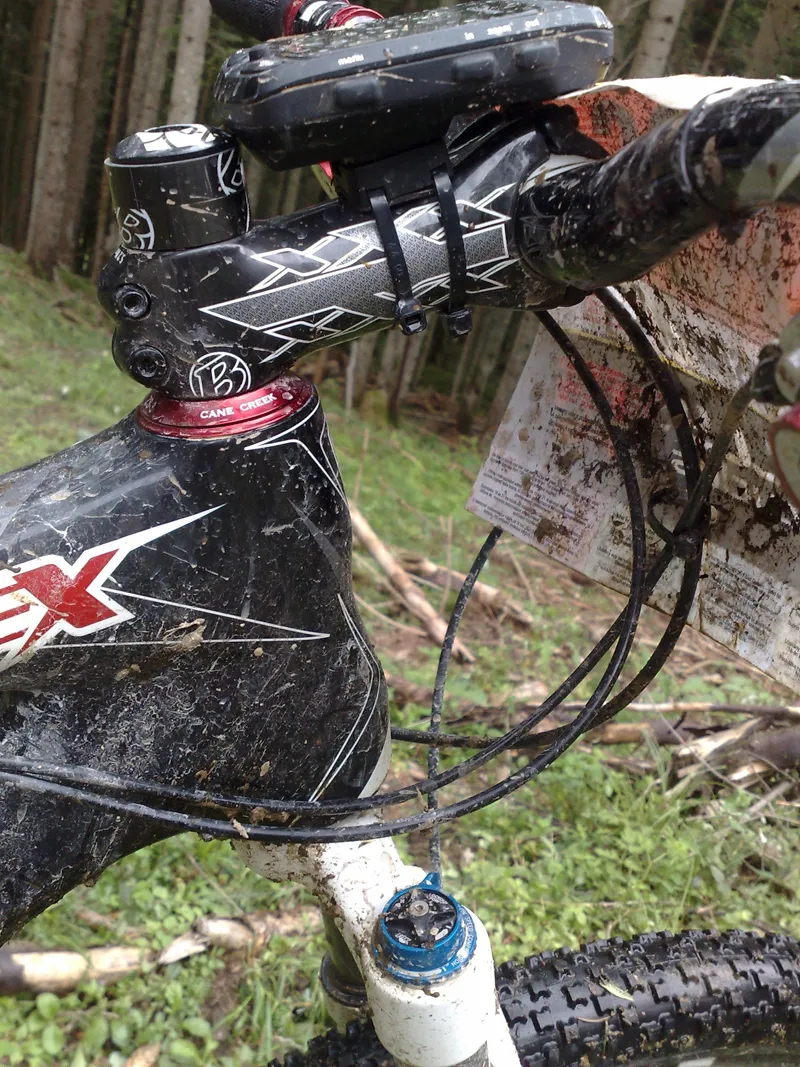Trek timed their 2010 launch in Austria to coincide with the Salzkammergut Extreme Marathon which, with the longest course covering 209km and nearly 8,000m of climbing, certainly qualifies as an ultimate trail bike challenge.
There aren’t many (if any) bikes better suited to the challenge than Trek’s new Fuel EX9.9 either. The combination of ABP rear pivot, sorted geometry and rider positioning has already established it as our favourite 120mm travel bike family. The 2010 changes look set to extend their lead too.
The big deal is the adoption of the DRCV tandem chamber shock co-developed with Fox Racing Shox and introduced last year on the Gary Fisher Roscoe. The stroke starts as a low-volume shock, with a relatively firm and progressive initial feel. Around 30 percent into the stroke, a push rod opens the valve into the second chamber.
This increases the air volume and gives a proper big-hit appetite without the usual bagginess and loss of control you get in the mid-stroke of conventional large-volume air shocks. As the second chamber opens and closes at the exact same pressure the first chamber reaches at the opening point, it’s a totally seamless transition too.
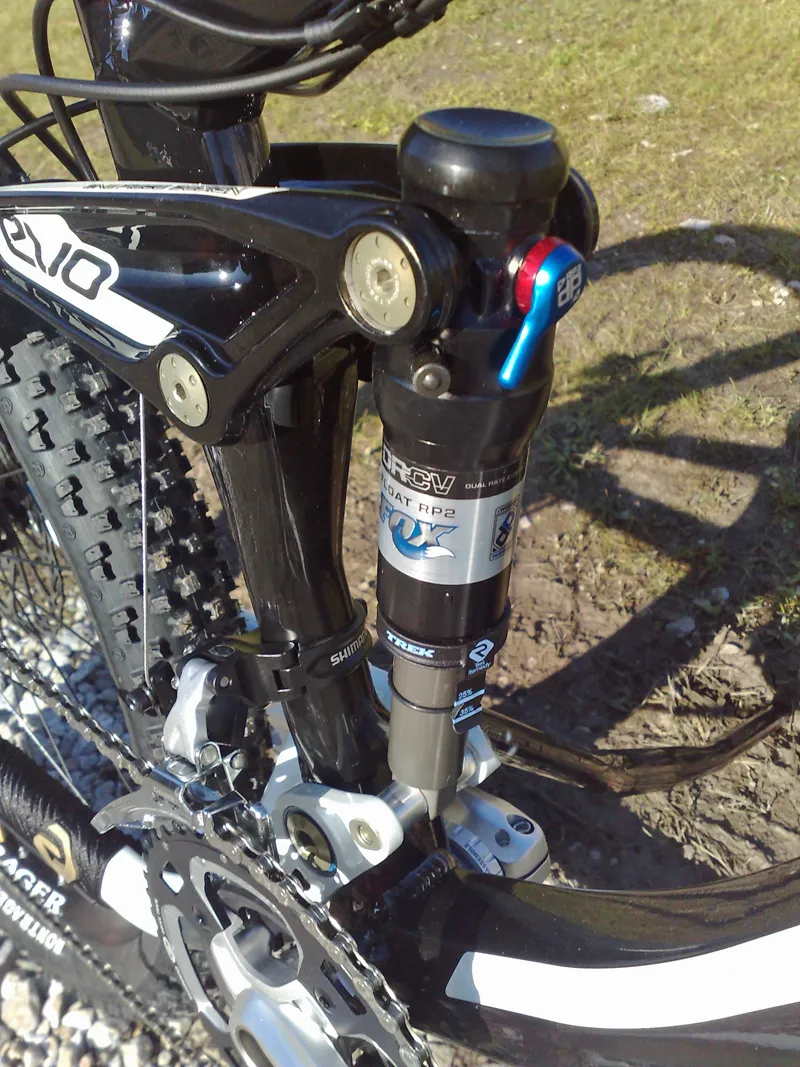
The DRCV shock has been co-developed with Fox
Up front the EX bikes finally get a 15mm screw-through fork axle on Fox forks (120mm on the carbon bikes, 130mm on the alloy ones). This tightens up steering at the tips and lets the E2 tapered head tube/steerer up top showcase its increased stiffness.
The carbon mainframed bikes also get carbon seatstays which, together with other tweaks such as the new lower profile ABP Race, drops frame weights by 200g to an impressive 2,054g (4.52lb).
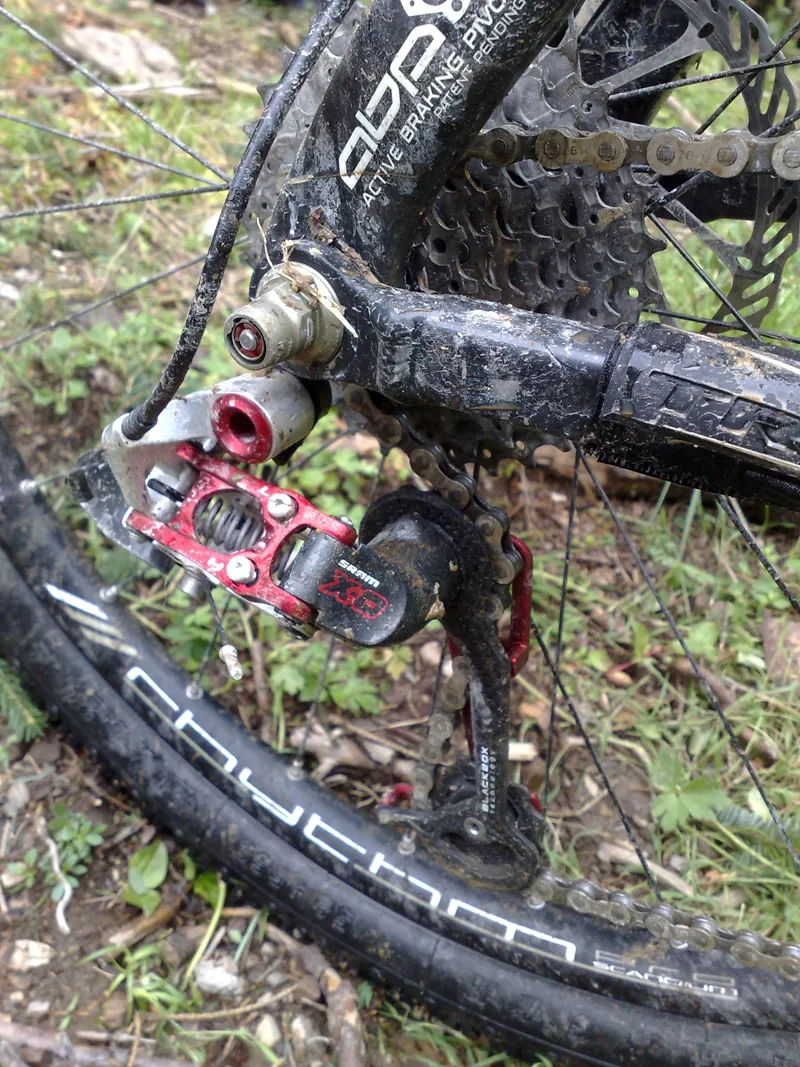
The new ABP Race pivot/skewer has a lower profile
Despite chunky Bontrager Rhythm rims and XDX tyres, complete bike weight is just 11.0kg (24.2lb) for an 18.5in size. Stiffness goes up by a claimed four percent in the process, girding an already impressively accurate feeling bike even further.
Good news for those without the cash to throw down £4,999 on the EX9.9 carbon bike is that the full technology suite now appears on every EX model right down to the £1,249 EX5. That means BB85 oversized bottom bracket with Shimano bearings, the E2 headset plus ABP and Evo link technology out back. Twin sag clips for both shock and fork also mean easy pump-and-go setup without referring to pressure charts.
Trial by water
A quick setup ride on Friday confirmed the new 9.9 genuinely extends the already impressive ride capability of the 2009 bikes (look out for a full test of the 9.8 model in What Mountain Bike issue 100) so we numbered and chipped up ready for an obscenely early start on Saturday.
It's 3am and my Suunto alarm goes off with drizzle hissing on the windows. By 3.30am we (that’s me, long-term Trek pro racer and product development guy Travis Brown and local Trek supergirl Lisa) are loading the van as the rain thickens and lightning rips through the sky as we drive to Bad Goisern. It’s soaking wet but not too cold as I get changed into my merino base layer and Gore jacket, then the storm kicks in properly 10 minutes before the start.
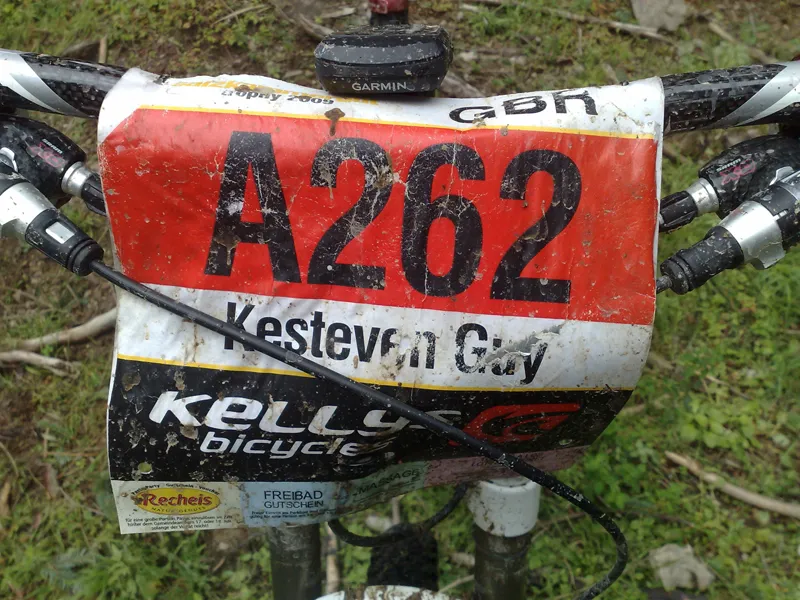
The Salzkammergut Extreme Marathon was a great way to put the Trek through its paces
The only way I can check my Garmin is running are the lightning flashes as we grind up the first mountain. Despite over 1hour 15min in the granny ring, I’m still stone cold at the top where temperatures have now dropped to just above freezing and snow has started to fall on orange and purple knees poking from my sodden shorts. Well I think it’s snow because I can’t actually feel anything beyond my hips or my elbows anymore.
We haven’t the time to go into the full descent deep into the misery cave as the day and deluge hammered on. However we will have the full epic tale in WMB issue 101 for those who like a bit of literary sadism in their life.
EXcellent
What really matters is that the EX never put a foot wrong. At 24lb it’s competitive against pretty much anything, even on ‘how the hell did they tarmac this?’ bottom cog road climbs. The generous top tube means no shortage of breathing space either.
The smaller initial chamber size, together with the new Fox Boost Valve technology, creates a stable pedalling platform even in setting one of the RP23 lever. As the day wore on and trails softened I eventually stopped using the ProPedal lever altogether.
The bounce was minimal and consistent traction was more important than the risk of a wheel slip triggering the cramp that was permanently fluttering round stone cold legs and shoulders. The fact I’d lost the feeling in my fingers after a couple of hours meant I couldn’t be guaranteed to turn it off before the next log flume plummet either.
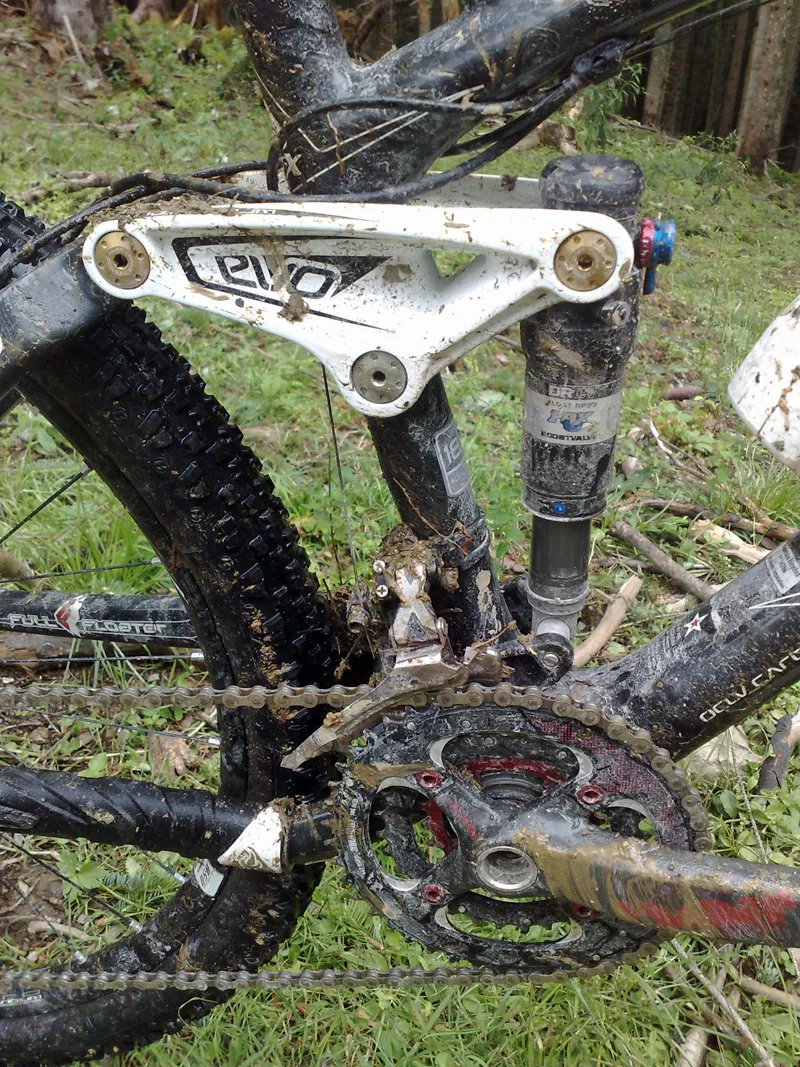
The new shock create a stable pedalling platform
While the gravel climbs may have been purgatory, the descents were far more technical and amusing than we could have hoped for. The mix of spin-out-the-big-ring swooping, sweeping fire road and nadgery big-drop-edged root and rock infested singletrack would be a challenge any day. Add near stationary riders on V-brake and slick equipped hardtails and up to 2ft of seething water and mud in places, and they were absolutely mental.
Given that the tyres were already stretched just trying to surf a safe line through what debris we could see to dodge through spray flecked specs, braking was an occasional luxury. Thank God then that the fork rapidly lost its initial notchiness and turned into a laser guided line cutter, capable of holding the sketchiest slides. The stiffness and accuracy of the frame turned from impressive to a survival imperative every few seconds as we plummeted towards each successive valley floor.
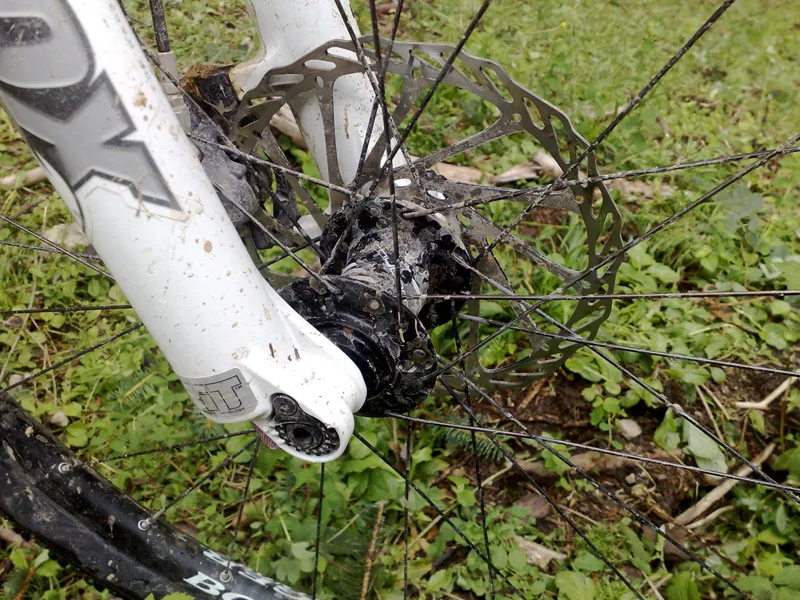
The 15mm axle Fox fork lost its initial notchiness and turned into a laser guided line cutter
Many of the suddenly created rapids ripping down the trails had uncovered serious and unavoidable big square blocks and drops. Not that the Trek minded, as it sucked up the biggest hits we couldn’t avoid as well as the ones we couldn’t see underwater or during blind overtaking moves.
Whatever the size of the hit or the frequency we clattered into them, the DRCV shock never wallowed, blew through or felt like it lost control, throwing us a lifeline time and time again. In fact it was only the demon descending prowess of the Fuel EX that kept us limping up each successive crawl-up-the-wall climb.
Check out WMB for the full story of how it ended. For now, here’s the other news from Trek...
Best of the rest
The biggie Trek saved till the end of the launch is that the 2010 Remedy now gets a full carbon front end, dropping weight of the top model to around 12.5kg (27.5lb). All four Remedy bikes also get DRCV shocks, narrower ABP Race skewers and Fox 150mm travel-adjust TALAS forks. We’ll be bringing you a first ride on the carbon Remedy as soon as rideable models are available.
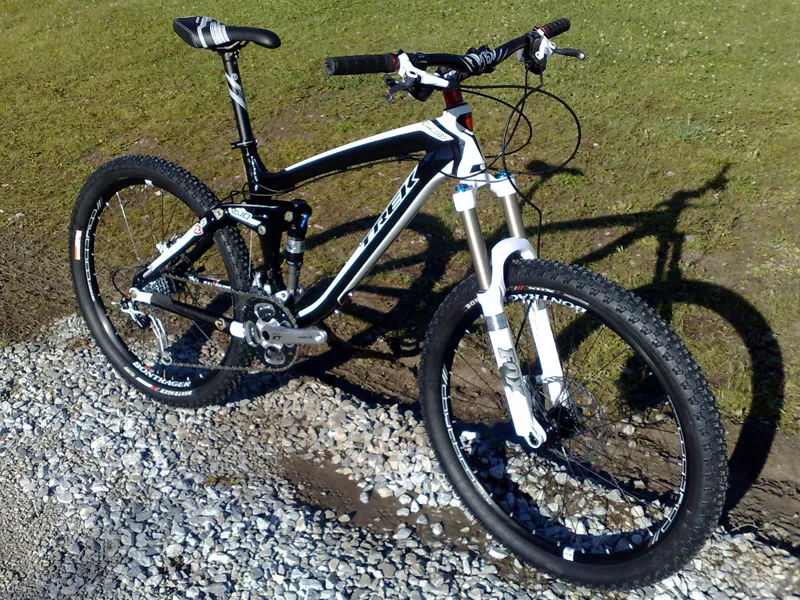
The top Remedy all-mountain models get new carbon fibre front ends for 2010
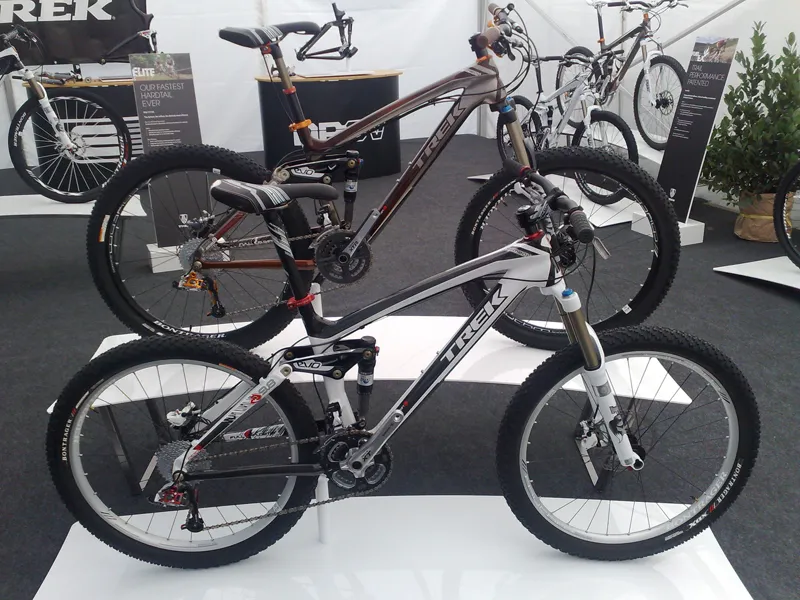
Alloy versions of the Remedy will still be available, with a lower price and higher weight
The OCLV Elite carbon race hardtail now inherits the ‘No Cut’ seatmast, BB90 bottom bracket and ‘Netmoulded’ headtube from the Top Fuel. This drops frame weight to 1,050g for a 17.5in size with sub-20lb full bikes on the cards.
Trek-owned Bontrager are bringing out a new range of tyres. The idea is that something from their line should suit every rider, from pro cross-country racers (400g XR0) to freeride fiends (FR3-5), as well as all trail conditions and levels of pilot aggression. As an easy guide, each tyre will be numbered one to five according to the level of grip you can expect.
They will also be introducing 29er versions of some tyres using a modified tread pattern to suit the longer, narrower contact patch of big wheels. Bontrager are also moving away from blanket use of ‘Gumbi’ dual compound tyres to specific rubber mixes for each application and pricepoint.
